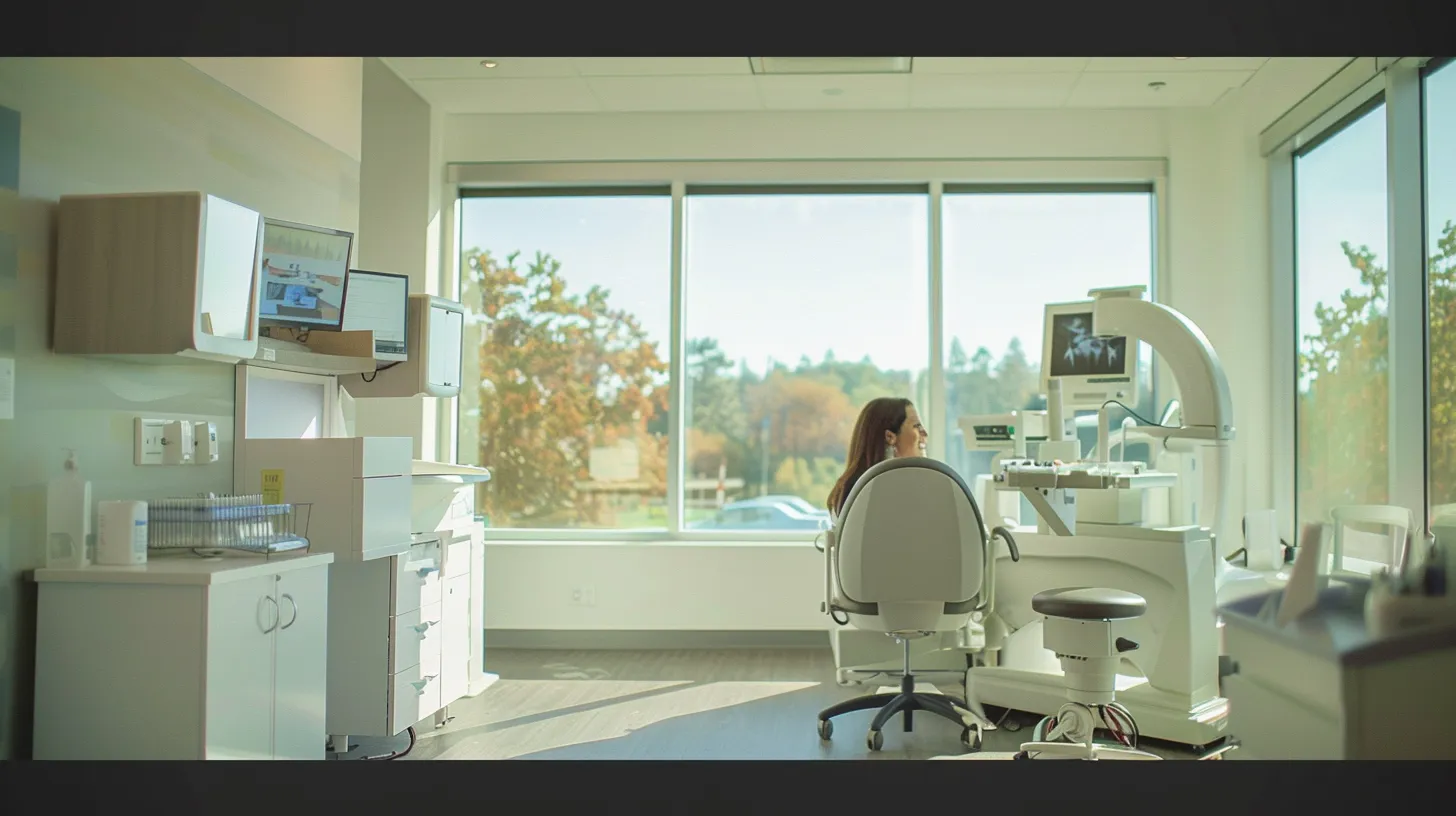
Understanding Vision Insurance for Eye Exams
Many patients wonder how vision insurance can reduce the cost of eye exams. Understanding vision insurance, particularly the VSP WellVision Plan, is essential for accessing necessary eye care. This article will outline the key components of vision insurancecoverage, explain how to use it for eye exams, and clarify the differences between vision insurance and health insurance. By engaging with this content, readers will learn how to maximize their benefits while avoiding common pitfalls, making their next visit to an eye care professional more affordable and efficient.
Key Takeaways
- Vision insurance provides financial support for routine eye care services and corrective lenses
- Regular eye exams help detect potential vision issues early, promoting overall ocular health
- Patients should understand their insurance details to maximize benefits and minimize out-of-pocket expenses
- Certain specialized treatments may not be covered by vision insurance, necessitating a thorough review
- The interplay between vision and medical insurance can complicate billing for eye health services
Define Vision Insurance and Its Role in Eye Exams

Vision insurance serves as a financial support system for individuals seeking eye care services, including regular eye exams. It helps cover costs associated with vision care, such as assessments performed by an eye dr now. With vision discount plans, members can access affordable options for necessary treatments and corrective lenses.
For many, obtaining these services without insurance can be a significant expense. Vision insurance typically provides benefits for routine eye exams, allowing patients to receive vision correction services more easily. In some cases, Medicare vision benefits may assist eligible individuals in obtaining essential eye care at reduced costs.
Understanding vision insurance is essential for making informed decisions regarding eye exams and related services. It ensures that individuals receive necessary screenings while managing their healthcare finances effectively. Regular check-ups can lead to early detection of vision issues, promoting overall ocular health and well-being.
Vision insurance shapes the way people access eye care. Understanding its key components reveals what truly lies within this essential coverage.
Identify Key Components of Vision InsuranceCoverage

Vision insurance plans typically include essential coverage for routine eye exams, ensuring individuals can access necessary assessments without facing overwhelming fees. These plans focus on facilitating eye care by reducing the financial burden associated with regular visits to an eye care professional.
Many vision discount plans offer additional benefits that cover various corrective lenses, such as glasses and contact lenses. By enrolling in these plans, individuals can save significantly on out-of-pocket expenses related to vision care, making eye health more accessible to everyone.
Individuals can optimize their vision benefits by carefully reviewing the specific details of their insurance plan. Understanding co-pay amounts, coverage limits, and what services are included will help patients make informed choices regarding their eye care needs:
| Key Component | Description |
|---|---|
| Routine Eye Exams | Regular assessments covered to monitor ocular health. |
| Vision Discounts | Reduced fees for various vision correction options. |
| Coverage Limits | Maximum amount covered by the plan for specific services. |
Understanding the key parts of vision insurance is just the beginning. Next, it is time to look at how to use that coverage for eye exams effectively.
Examine the Process for Utilizing Vision Insurance for Eye Exams

Utilizing a vision plan for an eye examination begins with understanding the specific coverage offered. Patients should review their policy details to identify which services are included, such as routine eye exams or other related medical procedures. This knowledge ensures they maximize their benefits during their visits to the eye care professional.
When scheduling an appointment, it is advisable for individuals to verify that their chosen eye care provider accepts their vision plan. Providers often bill the vision insurance directly for covered services, including routine assessments, which can significantly reduce out-of-pocket expenses. Patients can also inquire about co-payments or any potential charges related to specialized services, such as eye surgery.
After the eye examination, the billing process typically involves submitting claims to the insurance provider based on the services rendered. Patients should ensure that all necessary documentation is provided to facilitate smooth processing of their coverage. By understanding this process, they can confidently navigate their vision care needs while effectively managing associated costs.
Navigating vision insurance can feel straightforward, but the nuances often surprise people. Knowing how it differs from health insurance reveals even more about managing one’s eye care effectively.
Understand Differences Between Vision Insurance and Health Insurance

Vision insurance and health insurance serve different purposes in the management of an individual’s healthcare needs. Health insurance generally covers a broad range of medical services, including emergencies, hospital stays, and surgeries, whereas vision insurance specifically focuses on eye care services, such as routine exams and corrective lenses. Understanding this distinction is essential for maximizing accessibility to necessary health services.
Insurance plans for vision care often have specific benefits tailored to eye health, including regular eye exams and discounts on eyewear. This targeted coverage allows individuals to prioritize their vision-related needs without the broader scope found in general health insurance. Insurance companies usually outline these benefits clearly, ensuring clients are aware of what is included in their plans.
Another key difference lies in the costs associated with each type of insurance. Vision plans typically involve lower premiums and co-pays compared to health insurance, making eye care more financially manageable for individuals. This structure enhances accessibility and encourages regular check-ups, leading to better overall ocular health and timely interventions when issues arise.
Knowing what vision insurance covers is just the first step. Now, it is time to uncover the common exclusions and limitations that might affect your coverage.
Explore Common Exclusions and Limitations in Vision Insurance Policies

Vision insurance policies often have exclusions that affect coverage for certain services. For instance, many plans do not cover specialized eye care treatments or procedures unrelated to routine examinations, which could leave patients facing unexpected expenses. Additionally, some vision plans have limitations regarding the frequency of eye exams, potentially requiring longer intervals between visits.
Benefits may also be limited for specific corrective options, such as contact lenses and high-end eyewear. In some cases, standard lenses might be covered, but upgrades, including lens enhancements or designer frames, may not fall under the insurance coverage. Patients should thoroughly review their vision insurance to understand these limitations and ensure they can access the products they need.
Another area of concern involves the interplay between vision insurance and medical insurance. Certain medical treatments related to eye health may require patients to rely on their medical insurance rather than vision insurance, which can complicate billing and coverage arrangements. Understanding these distinctions, including how Medicare for vision applies, is essential for navigating eye care costs effectively:
| Exclusion/Limitations | Description |
|---|---|
| Specialized Treatments | Exclusions may apply to non-routine eye care services. |
| Corrective Options | Limitations often exist on contact lens coverage and upgrades. |
| Coverage Interplay | Patients may need to rely on medical insurance for certain eye health issues. |
Regular eye exams are vital for maintaining good vision. They can reveal issues early, and many insurance policies cover them, bringing real benefits to the patient.
Analyze the Benefits of Regular Eye Exams Covered by Vision Insurance

Regular eye exams covered by vision insurance play a crucial role in detecting potential diseases early, allowing timely intervention and treatment. Policies that include these exams ensure individuals have access to necessary assessments without the burden of high deductibles, which can often discourage seeking care.
Moreover, obtaining superior vision through corrective lenses or treatments becomes more feasible with insurance, reducing financial strain. This supportive coverage empowers patients to prioritize their ocular health, ensuring routine care remains accessible and manageable.
Additionally, understanding the intersection between vision insurance and other types of coverage, such as life insurance, can facilitate better overall health management. Individuals should recognize how comprehensive vision care contributes to their long-term well-being, supporting not only their eyesight but also enhancing quality of life.
Conclusion
Understanding vision insurance for eye exams is essential for managing eye health effectively. It allows individuals to access routine assessments and necessary treatments while minimizing financial strain. By familiarizing themselves with their coverage, individuals can ensure they receive the care they need, ultimately promoting better ocular health. Prioritizing regular eye exams is a proactive step towards maintaining overall well-being and quality of life.
